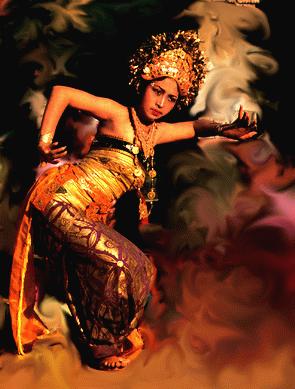 | |
Dance, music, and the theater of wayang are other forms of expression laden with religious connotations. The Trance Dance, for example, is performed when a village is suffering, say from an epidemic or bad harvest. The dance is intended to appease the gods and goddesses, with the hope that they will bless the village. Other dances also manifest the great complexity of Balinese daily lives which are never detached from their religious beliefs. Throughout the year, you can regularly find scheduled dance performances, especially the Balih-balihan or entertainment dances.
Along with the Hindu religion, the Indian influence in Balinese dances is also significant. Balinese strong identity adapts these various influences with indigineous religion of animism and folklore traditions, creating an expression distinctively flavored by Balinese ethnicity.
Much like the training of gamelan orchestra players, dance training begins when one is still very young. The teacher will stand in front of the children and start dancing. The children will follow her every movement. Once the teacher feels that a child understands the basic sequence, she will stand behind the child, and direct the child by holding her wrists. Practicing with a gamelan orchestra will only happen when the dance is considered to have entered the student. The dancer must learn to fully express the character that she is dancing for; self expression is not a known concept.

No comments:
Post a Comment